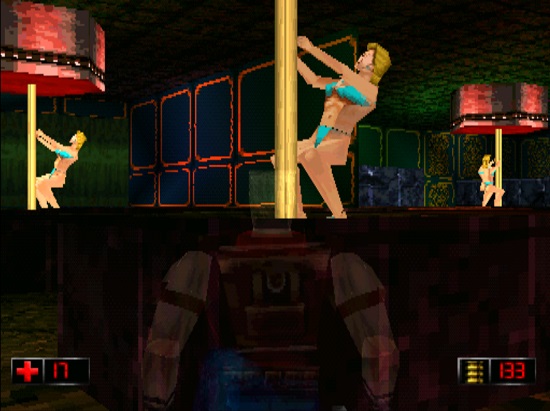
I really enjoyed Resident Evil 5; it delivered all kinds of cheese, heads were exploded, and was not boring. Also, despite my moral objections, it was incredibly racist.
Things can be two things, so it was bemusing and yet frustrating to witness gamers argue so passionately that a white guy shooting black guys is okay because it’s a sci-fi story about deadly infectious diseases spreading in Africa that could never happen in real life. Also, Sheeva bonus tribal outfit.
It’s obvious why no gamer would ever want their favorite video game to be labelled as “racist”, but at the same time, there’s no reason why a video game can’t be racist. As a piece of art, it’s an expression of themes and values that are appreciated within a cultural context. And in the case of Resident Evil 5, being racist does not necessarily impair a game’s ability to be incredibly fun.
So, let’s apply some standards to a video game to see how it fares with racial tolerance. In this case, we’ll use Maximum Force, a light gun shooting game that enabled men with all the machismo a quarter can provide through the use of bright neon-colored peripherals.
If Maximum Force were to have incurred any controversy when it was released, it would have been for the excessive violence in which shot enemies turned into puddles of blood. It would not have been for the fact that all the good people are white (wearing white clothes) while non-whites people are only portrayed in this game as adversaries to be shot.
This is, quite obviously, a gameplay mechanic that made playing this game very simple for players: don’t shoot the good guys, who are (literally) all white, but shoot the bad guys who aren’t white.*
Still don’t think that’s controversial? Write that on a sandwich board and send Bruce Willis out into Harlem wearing it.
It’s easy enough to pass off any serious criticism as “Oh, it’s just a video game,” you know, because video games aren’t considered as serious art whenever it’s inconvenient. So, in order to lay down a standard of tolerance, here are three questions you should ask of a video game in order to determine if it is racist or not:
- Does this video game employ racist imagery, or stereotypes?
- Does this video game use racial themes to improve this game?
- (of question #2) How?
This is by no means a scientific way to assess racism, it’s just a superficial test to make us more aware of racial themes employed in video games. Like the far-wittier Beichel test, it’s internet shorthand for people who have no time for the semi-colon in tl;dr.
#1 is a dead giveaway for racism, but it’s surprising to see how many games are guilty of #2 and 3. The real kicker is the last one because as hard as it is to make video games, it seems racial and cultural tolerance is just not important enough to uphold if it ensures more sales (then) or a higher Metacritc score (now).
Let’s apply these three question to Maximum Force and see how it does:
- No
- Yes.
- It equates non-white people as adversaries because they are easier to identify due to their ethnicity. Therefore, you’ll always know whom to shoot.
We can’t say that Maximum Force is an outright racist video game, something that can be said of Resident Evil 5 as it would fail all three questions. But with these three questions, we can start to understand the messages that video games are saying, even though no one may be listening.
Whether it’s racist or not is not as important as having the critical discussion required to open a deeper understanding of the games we enjoy only for the sake of fun.
* Full disclosure: bad guys include white people wearing black clothing. Infer what you must
How far did I get in 40 minutes: I haven’t been able to finish both the secret base and bank scene
Will I play this game once this year is up: Yes
The good stuff: Lots of propane tanks, the resulting explosions are many; the game is a lot the name it’s called
The bad stuff: terrible controls with no way to adjust it; talking bout racism takes valuable time away from playing the game
Days so far in the Year of the Play-a-DayStation: 15

